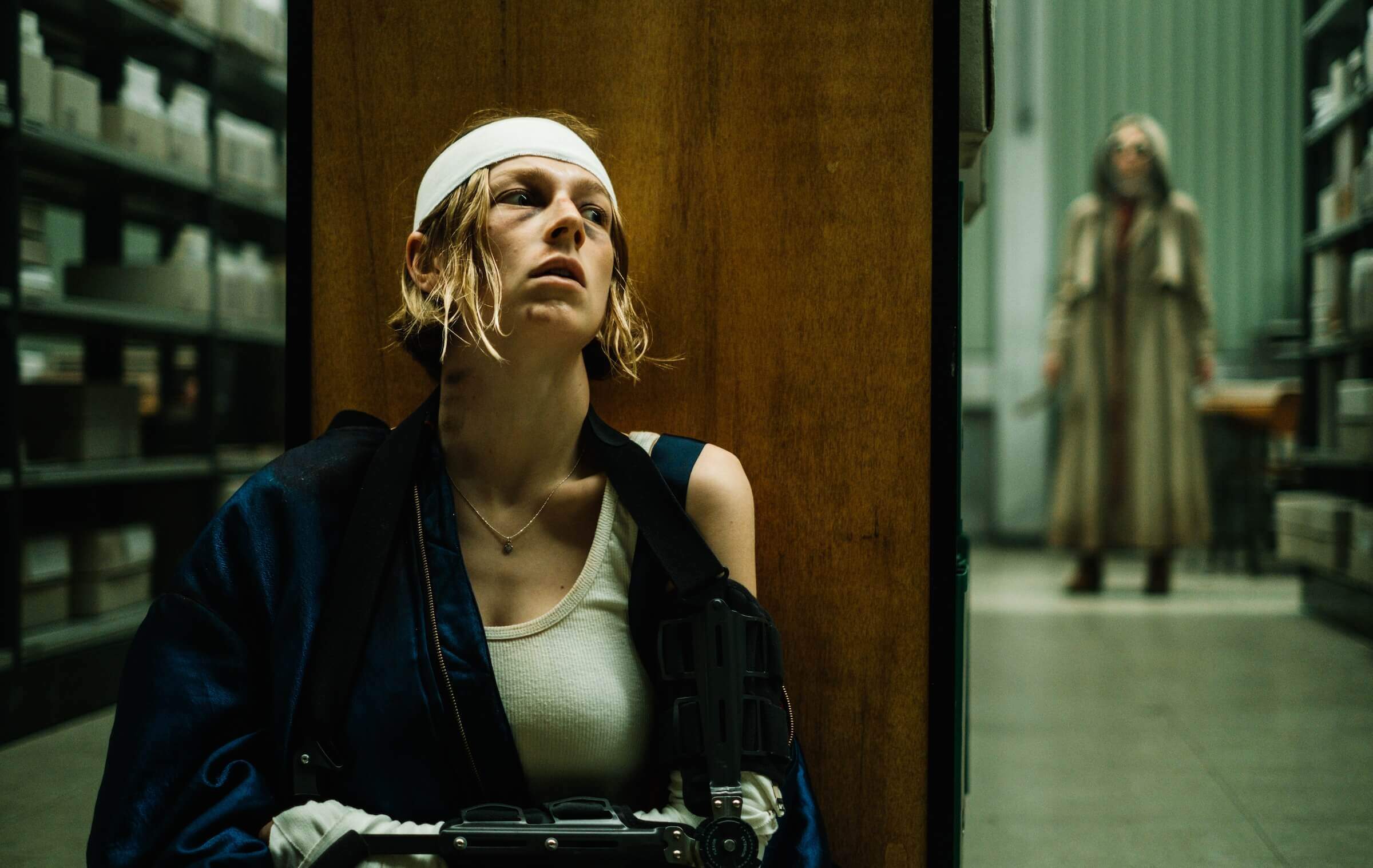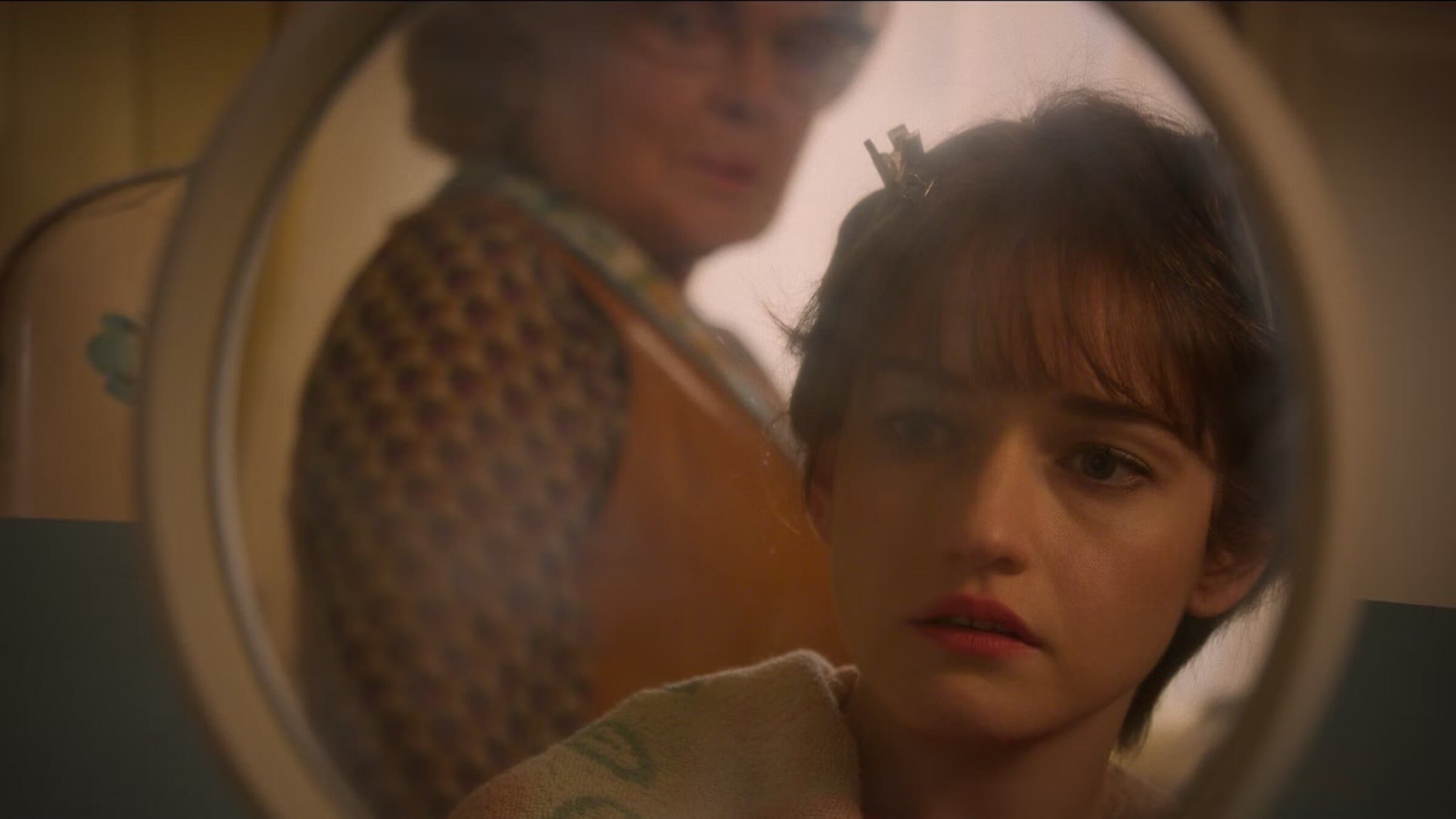How Longlegs’ Terrifying Marketing Teaches You to Craft a Great Villain
July 9, 2024
Creating a killer is no easy task. Sure, writing villains can be fun as you dive into what makes them tick and what justifies their crimes against humanity. But making a villain terrifying is another story.
Recently, Longlegs has crafted mystery and excitement around its satanic serial killer despite audiences rarely catching a glimpse of him through the marketing. Writer and director Osgood Perkins and Neon have created something even more terrifying than a horror movie villain: the idea of one.
Let’s break down what makes the killer in Longlegs so terrifying and how writers can craft an equally great villain.
The first time Maika Monroe saw Nicolas Cage as Longlegs, her heart rate hit 170 bpm.
— ↃL⊥\\Ↄ—\\ᘰ (@LonglegsFilm) July 8, 2024
LONGLEGS opens in theaters Friday: https://t.co/3tgjmFAPLc pic.twitter.com/DaweYaDgxM
Building the Idea of a Killer
While not every horror film relies on a physical antagonist to drive the story’s plot forward, Longlegs seems to be built on the idea of a satanic serial killer who calls himself Longlegs (Cage) drawing Agent Lee Harker (Maika Monroe) into his brand of hell, forcing the FBI agent to reconcile with her religion.
While the marketing has kept Longlegs’s face a mystery to the audience, there is already this idea around the terror of the character. But why? It helps that Cage is branded as a daring actor who is willing and ready to take big risks. It also helps that Perkins’s film gives off intense The Silence of the Lambs vibes, which has an iconic villain, Hannibal Lecter (Anthony Hopinks), whose intelligence and unblinking stare sends a shiver down anyone’s spine.
Through snippets of his voice and glimpses of the actor’s look in the final trailer, the “bloody violence and disturbing images” promised in the film’s theatrical poster have already made Longlegs an iconic horror villain.
The Art of Monster Making
But the idea of a villain is not enough to make a memorable monster. Sure, there are iconic serial killers, but what makes them iconic is not necessarily the kills or the violent crimes. Instead, it is how their presence sends a chill down the audience’s spine.
Cage explains it brilliantly to IndieWire, saying, “The monster is a highly, highly dangerous substance. How it’s moved, unveiled, deployed must be treated very carefully.”
So, how do you make a memorable killer after planting the idea of one in your story? One way to carefully deploy the villain is through ambiguity and the fear of the unknown. True ambiguity is about leading the audience to the door, building suspense and tension with each step they take alongside the protagonist. Once we see what is behind that door, that ambiguity is gone.

Creating Tension
Tension is a screenwriter's greatest tool when crafting a sinister villain. If the protagonist is someone we can root for, the audience worries for their safety when the villain is near. But the relatability of characters–good or bad–is what makes them compelling enough to make the audience want to care.
Nothing is more unsettling than understanding the mind of a villain and seeing some aspect of yourself reflected. While we haven’t seen Longlegs in his full on-screen glory, something is frightening about Agent Lee’s reactions to his crimes and her connection to them that hooks an audience. The morbid curiosity kicks in and we need to know what is happening and why.
This desire to know can build up, and transform into the not-so-secret ingredient of horror: terror.
Establishing Terror
To create terror, the atmosphere in the story must allow the audience to fear what is coming. That anticipation—often conveyed through the protagonist’s experiences—has the audience holding their breath until the scare hits them.
It’s a writer's job to consider what will happen next, pushing the momentum of the film forward and keeping the audience hooked on the build-up and release that makes horror so addicting. This doesn’t mean writers can take shortcuts! Horror audiences are smart and have watched great executions of terror on screen. While trying something new is always encouraged, try to read some of your favorite scary moments in a screenplay to see how these moments are executed.
In Barbarian, screenwriter Zach Cregger writes out Tess’s thoughts as she moves through the horror, often ending intense pages of action and thoughts with a jump scare:


Screenwriter Dan O'Bannon’s horror in Alien is written in short, pointed action, making everything happen so fast that the slower moments emphasize the intensity of the terror:

There are many ways to deliver a scare, but don’t get lazy. If a character is just moving from one place to another just to get murdered, there is no tension or terror to hook the audience. While we know a character’s eyes will get gouged if they look through the eye-shaped peepholes in a door like in X, that build-up to the one wrong decision that leads to a death motivated by sexual frustration is tense, terrible, yet it is something audiences want.
The build-up of a scare should feel tense and terrifying because there are stakes, so don’t forget them. Knowing your voice and how you want to build up to the ultimate moment of horror that inspired your screenplay idea will be your ultimate tool in writing an iconic villain.
Read More: The Horror Spec: How to Write a Horror Movie
Crafting a Villain From Your Experiences
While fans of the genre often look for films with strong characters overcoming traumatic experiences through another traumatic event, writing a strong story should always be a screenwriter’s priority, no matter the genre. One of the best ways to write a good story is by drawing on personal experiences.
For Perkins and Cage, Longlegs connects to profound struggles related to their respective mothers’ issues.
“[Perkins] blurted out, ‘This is a movie about my mom,’ which isn’t what you expect to hear from a director of a horror film,” Cage said to IndieWire. “And I said, ‘Well, oddly enough, Oz, I see this character as being about my mom and everything she had to deal with.'” Cage found that channeling his probing questions about his mother’s mental health decline made his performance feel deeply personal. “She would talk in terms that were kind of poetry. I didn’t know how else to describe it. I tried to put that in the Longlegs character because he’s really a tragic entity. He’s at the mercy of these voices that are talking to him and getting him to do these things,” he added.
For Perkins, everything he writes is about himself and the generational tensions that come from decades of lying and hiding out of a parent’s fear and love. “Everything I try to do, I try to make it about myself, only so that it creates a truth for me and an honesty, and I know I’m never full of shit if I’m talking about myself,” Perkins said. “As coded as it might be and as many layers of other stuff on it that there are, at the end of the day, all the movies I generate are essentially based on my experience, and that tends to be my experience with my parents.”
After writing his last feature, Gretel & Hansel, Perkins felt that he had missed an opportunity to touch on a core idea that had been itching at his brain. He took this idea, which was that a mother lies out of love, and made it the core theme of Longlegs and its characters.
While these issues might feel singular, horror often showcases that many people have experienced similar horrors in their lives. Showcasing these experiences on the silver screen in a way that feels personal will resonate with the audience, so don’t be afraid to put yourself (and your fears) into your villain. The best part is that you can overcome those fears with a badass protagonist.

—
Creating a killer villain in your screenplay is a complex and challenging task that goes beyond the mere idea of one. Perkins understands this when it comes to crafting Longlegs, and the horror that makes this villain terrifying and memorable. While audiences don’t really know what motivates the serial killer, that ambiguity, terror, tensions, and a touch of personal fears make Longlegs a villain worthy of all the hype.
Written by: Alyssa Miller
Alyssa Miller is a passionate writer, editor, and educator with a deep love for storytelling. She holds a Bachelor of Arts in English with a minor in Communications from the University of San Francisco and has extensive experience as a freelance writer, specializing in entertainment and film education. Her work has appeared in renowned publications such as Britain's First Frame, No Film School, Industry Arts, and Final Draft. In addition to screenwriting, Alyssa shares her insights on the latest releases through her YouTube channel (@alyssawatchesmovies), reflecting her unwavering dedication to the art of storytelling.



